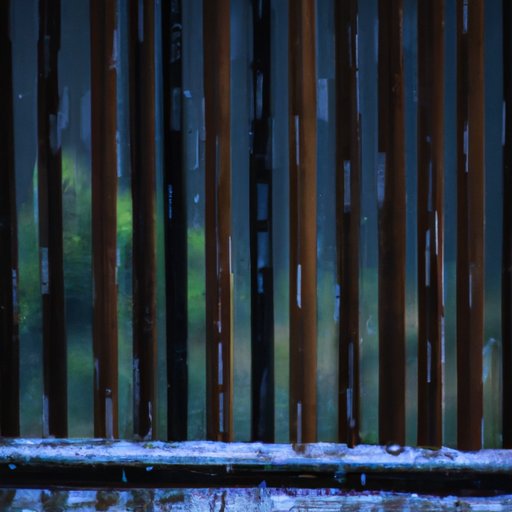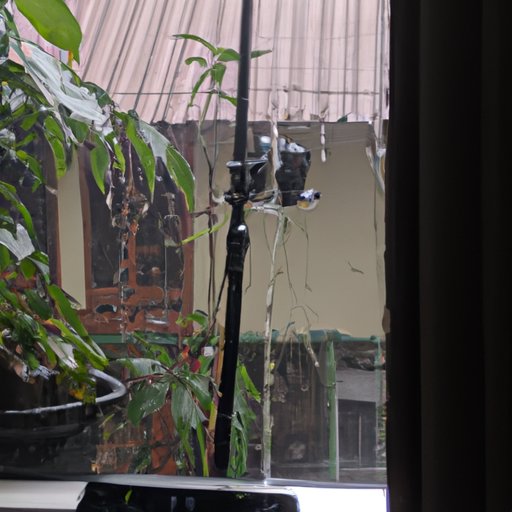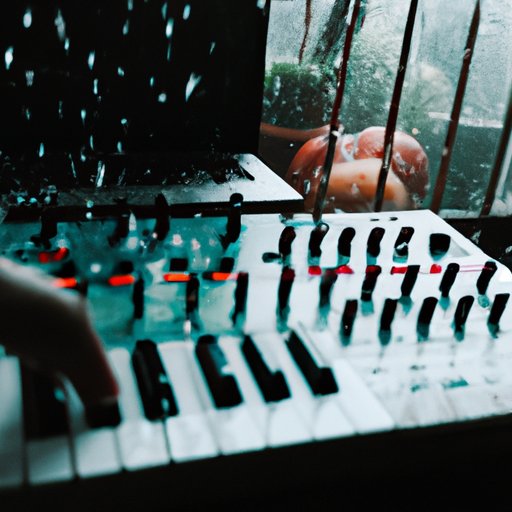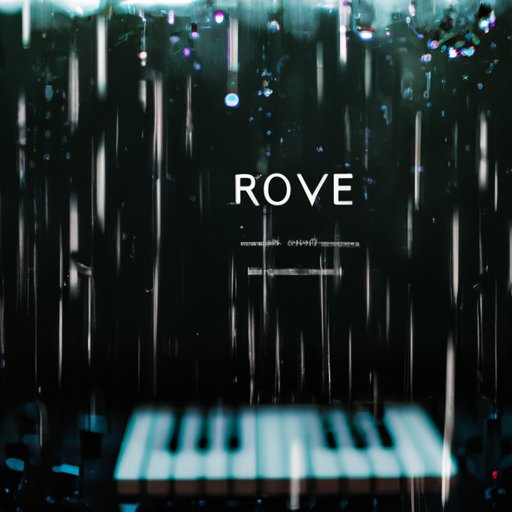Introduction
Adding rain sounds to music can create a unique and immersive atmosphere for listeners. Rain sounds can be used to evoke a wide range of emotions, from peaceful solitude to intense drama. But how exactly do you go about adding rain sounds to your music? This article will provide a comprehensive guide on how to incorporate rain sounds into your music production.

Using a Rain Sound Effect Library
One of the easiest ways to add rain sounds to your music is by using a sound effect library. A sound effect library is a collection of sound recordings that can be used in various audio projects. There are many benefits to using a sound effect library for your rain sounds. It’s cost-effective and time-efficient, as you don’t have to spend time or money recording your own rain sounds. Plus, you can easily find a variety of high-quality rain sounds in one place.
When choosing a sound effect library, there are a few things to consider. First, consider the quality of the recordings. It’s important to choose recordings that sound realistic and natural. Next, look at the size of the library. Some libraries contain hundreds of different rain sounds, while others may only have a handful. Lastly, think about the price. Most sound effect libraries are relatively affordable, but it’s still good to compare prices before making a purchase.

Recording Your Own Rain Ambience
If you’re looking for a more authentic approach, you can always record your own rain sounds. Recording your own rain sounds can be a fun and rewarding experience. To get started, you’ll need some basic recording equipment. At the very least, you’ll need a microphone, an audio interface, and a laptop or computer with recording software.
Once you have the necessary gear, you’ll need to find a suitable location to record your rain sounds. Look for areas that have light to moderate rain. Try to avoid places with heavy rainfall, as this can cause unwanted noise and distortion. You should also consider the type of environment you’re recording in. For example, if you’re recording in a forest, the rain will sound different than if you were recording in a city.
Finally, it’s important to think about how you want to capture the rain. Do you want to focus on the sound of the raindrops hitting the ground, or the sound of the rain falling through the air? Both approaches can be effective, so experiment and see what works best for your project.

Mixing Rain Sounds with Synthesizers
Mixing rain sounds with synthesizers can create an interesting and unique soundscape. While it can be a great technique, there are both pros and cons to consider. On the plus side, combining rain sounds with synthesizers can create a more vivid and immersive atmosphere. On the other hand, it can be difficult to mix the two sounds together without them sounding muddy or distorted.
When mixing rain sounds with synthesizers, there are a few techniques you can use. First, try panning the rain sounds to one side and the synthesizers to the other. This will help keep the two sounds separate and prevent them from clashing. You can also try using a low-pass filter on the rain sounds to reduce the high frequencies, which can help make the two sounds blend together better. Finally, you can use a compressor to even out the dynamics between the two sounds.
Layering Multiple Rain Sounds
Layering multiple rain sounds can create a more dynamic and realistic soundscape. By combining different types of rain sounds, you can create a complex and immersive atmosphere. For example, you could layer thunder, rainfall, and wind sounds to create a stormy ambience. Or you could combine light rainfall with a distant thunderstorm to create a sense of tension.
When layering rain sounds, it’s important to pay attention to the levels of each sound. Make sure the levels are balanced, so one sound isn’t overpowering the others. Additionally, experiment with panning the different sounds to different locations in the stereo field. This will help create a more immersive soundscape.
Adding Reverb to Rain Sounds
Adding reverb to rain sounds can create a more natural and realistic effect. Reverb helps simulate the acoustics of a space, which can make rain sound like it’s coming from a specific environment. When adding reverb, make sure to use a subtle amount. Too much reverb can make the rain sound artificial and unnatural.
Start by adjusting the wet/dry mix of the reverb. Set it to a low level, around 20-30%. Then adjust the decay time. A short decay time (around 1-2 seconds) will make the rain sound like it’s coming from a small room, while a longer decay time (3-5 seconds) will make it sound like it’s coming from a larger space. Finally, adjust the pre-delay setting to control the timing of the reverb. A pre-delay setting of around 50-100 ms will help make the rain sound more natural.
Conclusion
Adding rain sounds to music can create a unique and immersive atmosphere. There are several ways to incorporate rain sounds into your music production, from using a sound effect library to recording your own ambience. Additionally, you can experiment with mixing rain sounds with synthesizers, layering multiple sounds, and adding reverb to create a more realistic effect. With these tips and techniques, you’ll be able to create compelling and atmospheric music with rain sounds.
Additional Resources
For more information on adding rain sounds to music, check out these helpful resources:
- Adding Rain to Music – Sound on Sound
- How to Create Your Own Rain Sound Effects – Sonniss
-
(Note: Is this article not meeting your expectations? Do you have knowledge or insights to share? Unlock new opportunities and expand your reach by joining our authors team. Click Registration to join us and share your expertise with our readers.)
